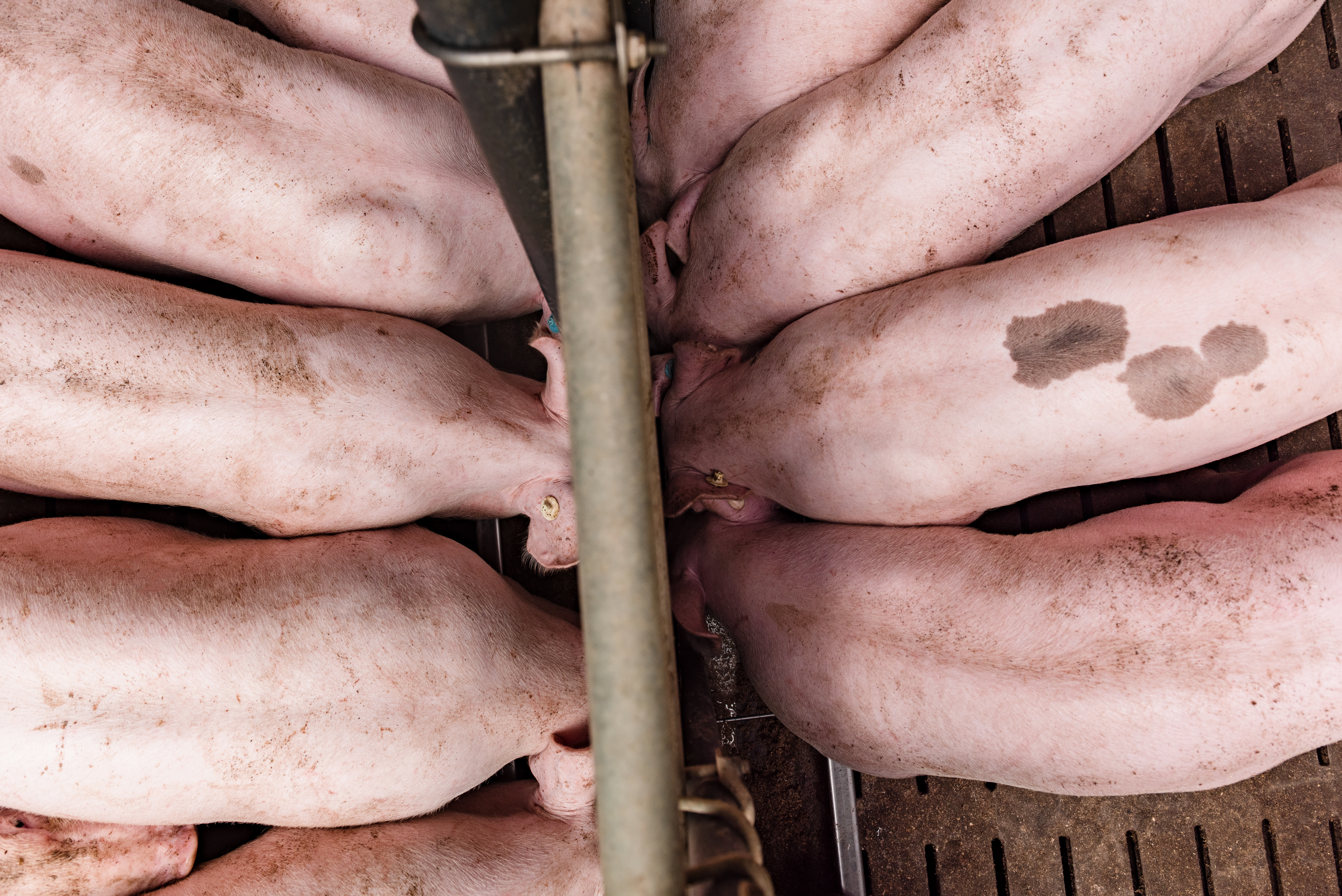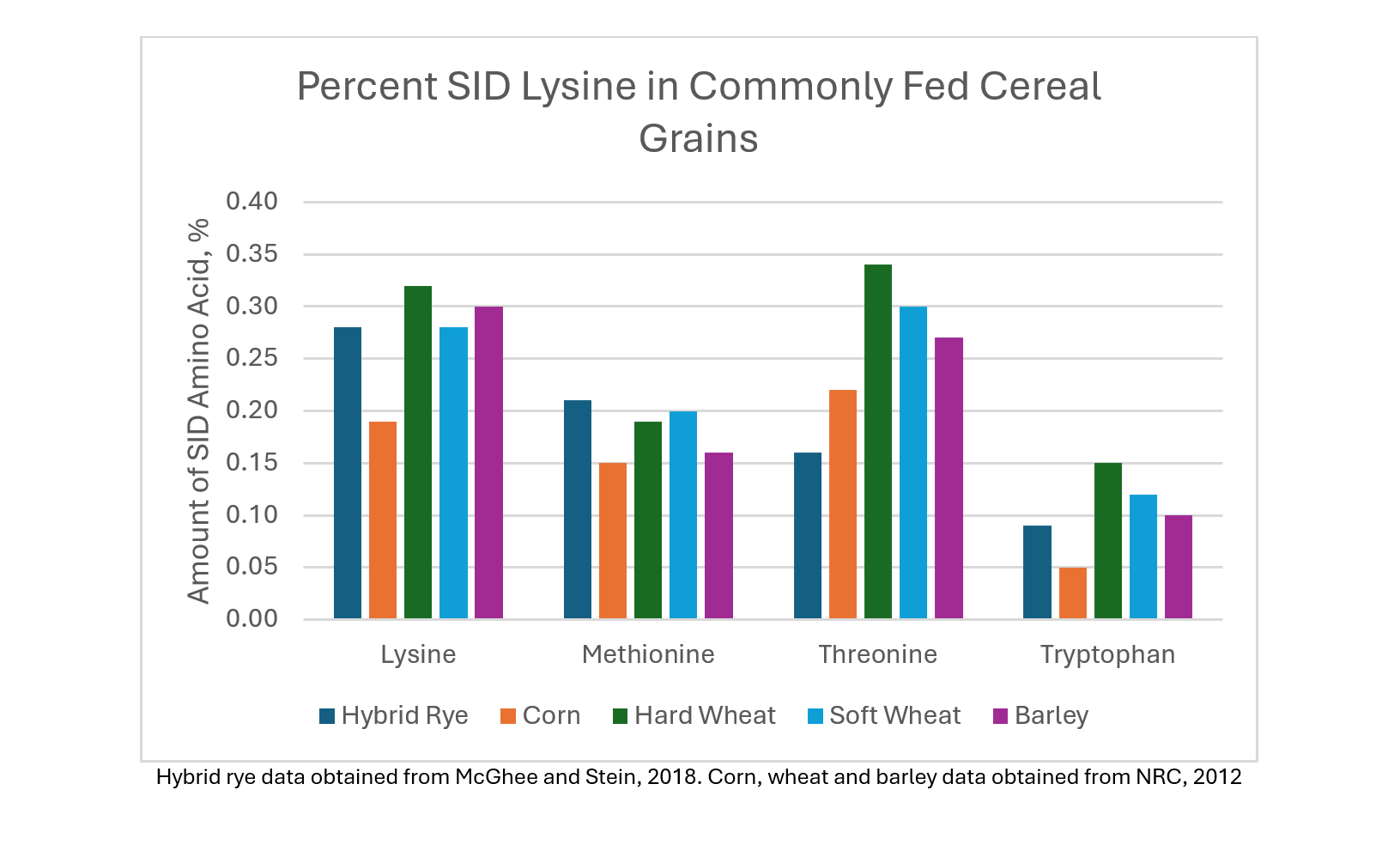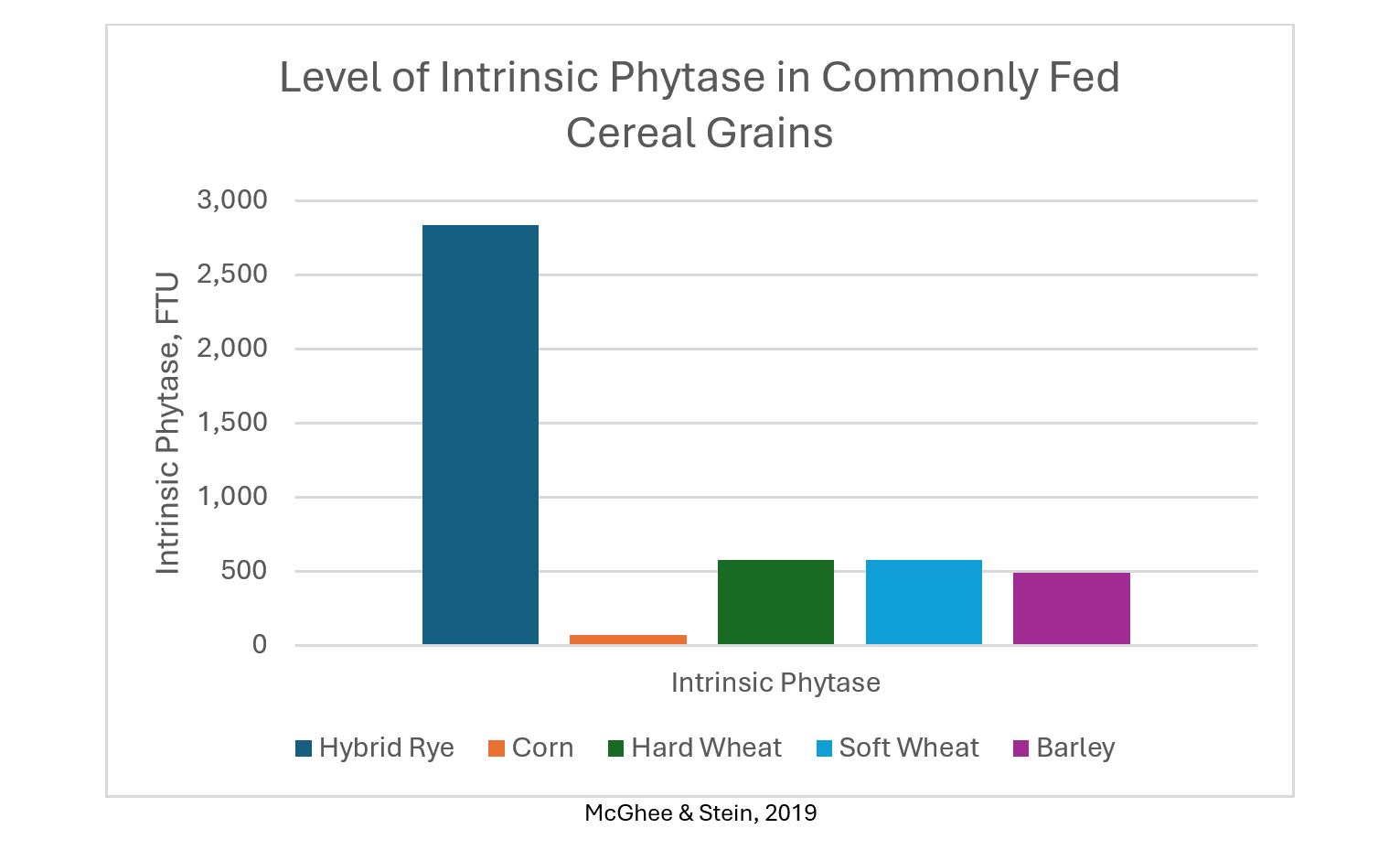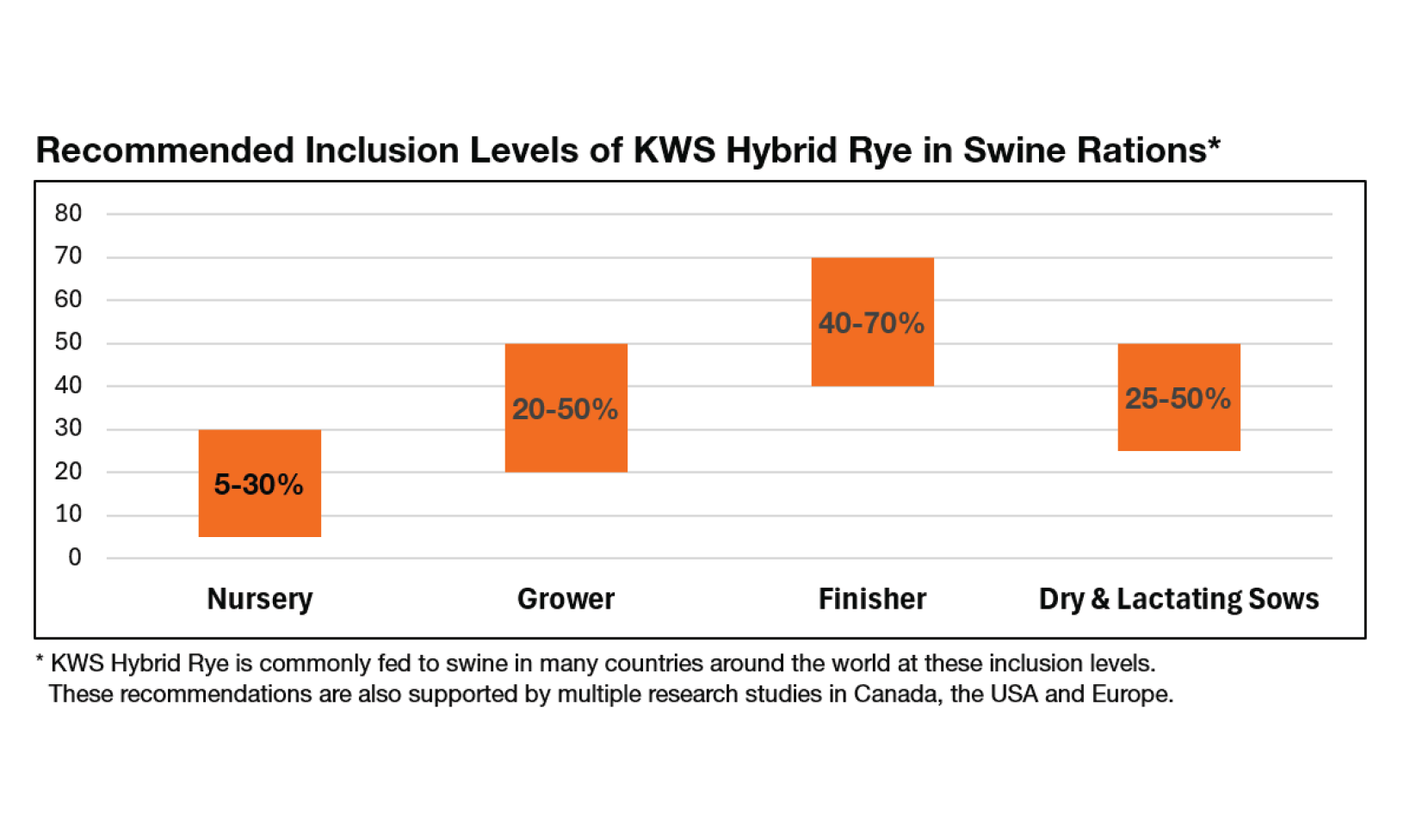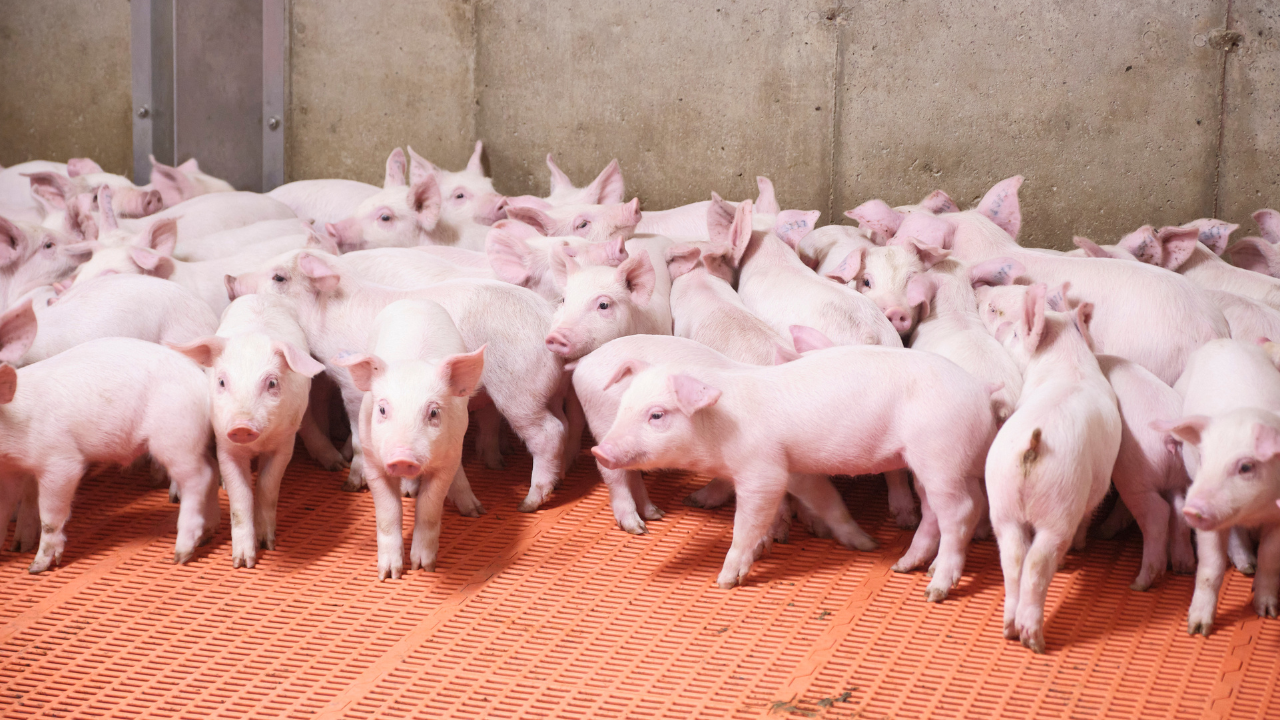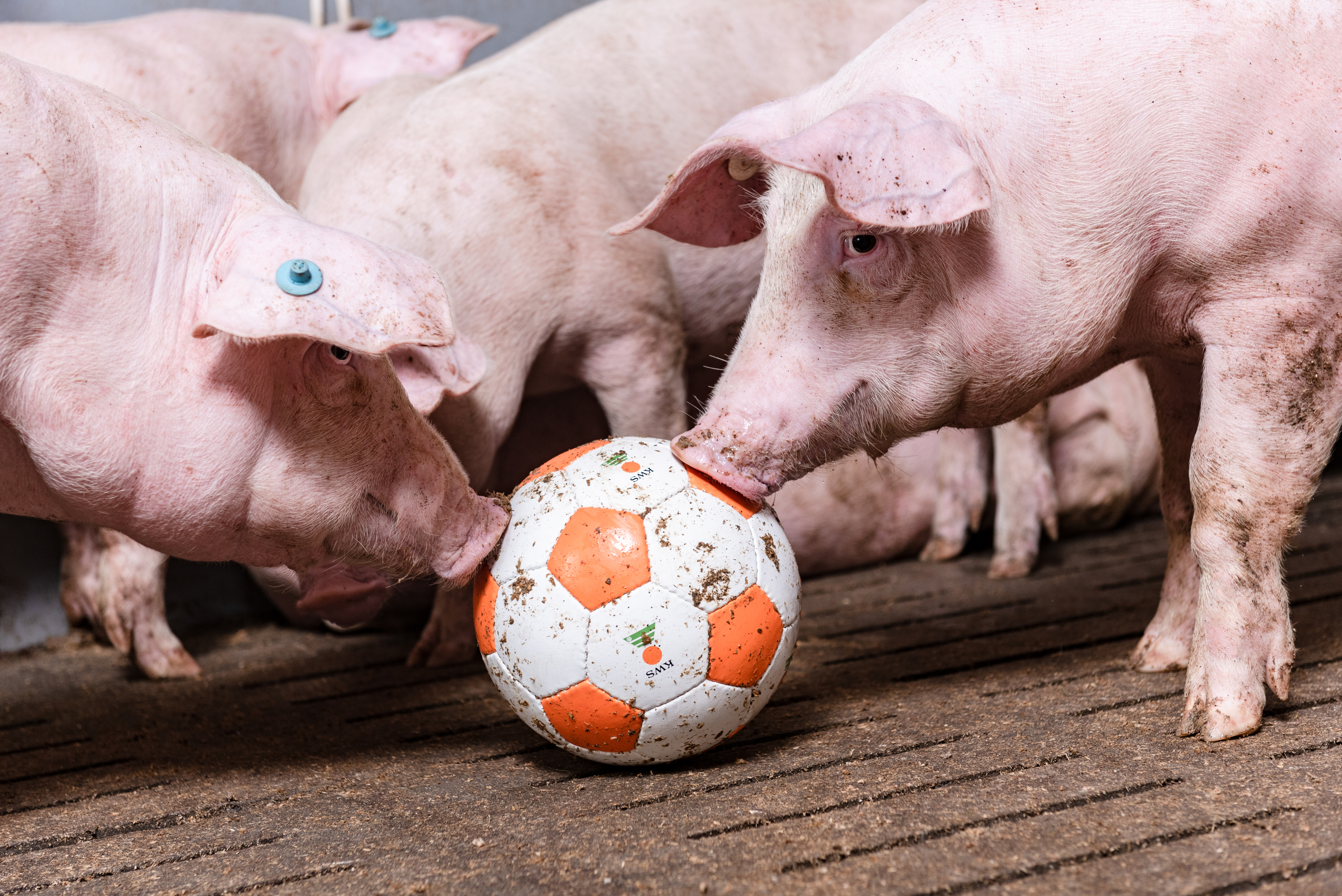Hybrid Rye for Pigs
More Hybrid Rye for Pigs Pages: Hybrid Rye for Sows | Hybrid Rye for Nursery Pigs | Hybrid Rye for Growing/Finishing Pigs
Hybrid rye grain is an excellent nutrient source and provides many functional attributes to pigs of all ages. Whether you are looking for a solid nutritional profile, improved animal health and welfare, excellent meat quality or environmental sustainability, hybrid rye is an excellent fit on your farm.
Hybrid rye offers consistent crude protein content (9-10%) with an excellent amino acid profile (increased SID lysine and methionine vs. corn, similar to wheat and barley). The fibre portion of hybrid rye is made up of a high level of soluble fibre, containing 2.1% β-glucans, 1.1% fructans and 8.2% arabinoxylans which are lacking in corn and wheat. The energy dense starch component of hybrid rye, combined with the fermentation of soluble fibre, provides an excellent energy source for pigs. Hybrid rye also has a very high level of intrinsic phytase, making dietary phosphorus more digestible to the animals, leading to less phosphorus excretion into the environment.
Average Nutrient Composition of KWS Hybrid Rye Grain(1)
| Composition, as fed | Average | Standard Deviation |
|---|---|---|
| Proximate Components, % | ||
| Dry Matter | 89.07 | 1.34 |
| Crude Protein | 9.77 | 1.61 |
| Crude Fibre | 2.22 | 0.53 |
| Ether Extract | 1.80 | 0.74 |
| Ash | 1.84 | 0.89 |
| Carbohydrate Components, % | ||
| Neutral Detergent Fibre | 14.47 | 3.35 |
| Acid Detergent Fibre | 3.34 | 0.68 |
| Starch | 57.04 | 5.69 |
| Beta-Glucans2 | 2.1 | 0.06 |
| Fructans2 | 1.1 | 0.12 |
| Arabinoxylans2 | 8.2 | 0.28 |
| Minerals, % | ||
| Calcium | 0.05 | 0.01 |
| Phosphorus | 0.29 | 0.04 |
| Phytate P | 0.17 | 0.01 |
| STTD of P3 | 59 | 4.10 |
| Amino Acids, % | ||
| Lysine | 0.43 | 0.16 |
| SID Lys2,3 | 64 | 3.46 |
| Methionine | 0.27 | 0.20 |
| SID Met2,3 | 78 | 1.52 |
| Threonine | 0.24 | 0.07 |
| SID Thr2,3 | 66 | 4.20 |
| Tryptophan | 0.12 | 0.02 |
| SID Trp2,3 | 76 | 3.97 |
| Energy, Kcal/kg | ||
| Gross Energy | 3,806 | 55 |
| Digestible Energy | 3,515 | 200 |
| Metabolizable Energy | 3,503 | 117 |
| Net Energy | 2,567 | 41 |
| Other | ||
| Iodine Value Product (IVP)4 | 16.24 | - |
| Intrinsic Phytase, FTU5 | 2,833 | 473 |
¹ Unless otherwise noted, hybrid rye data was collected from 16 samples used in Canadian Research Trials between 2016-2024 (not all studies reported all values). Corn, wheat and barley data obtained from NRC, 2012.
² Hybrid rye data obtained from McGhee and Stein, 2018.
³ STTD = standardized total tract digestibility, SID = standardized ileal digestibility
⁴ Calculated based on reported fat profile in INRA feed tables, 2024
⁵ FTU = phytase units per kilogram; McGhee & Stein, 2019
Research conducted across Europe and North America has built confidence and strong feeding recommendations for hybrid rye, which has become an established component of swine feed in countries such as Denmark, Germany, Poland and Spain and is gaining traction in North America. Inclusion levels ranging from 5-70% can be used depending on the stage of animal production.
Swine Feeding Advantages
- Highest yielding cereal crop so you can feed more pigs per acre
- High in energy, nutrient dense and highly digestible
- Excellent amino acid profile, including high levels of lysine, methionine and threonine
- Rich in high-quality, soluble fibre and resistant starch that promote animal health and well-being
- High phosphorus digestibility due to very high levels of intrinsic phytase
- Lowest Iodine Value Product (IVP) of all cereal crops, making it an ideal choice for meat quality and firmness
- Can be included in all stages of swine production
Early pollination and KWS PollenPLUS® technology means that KWS Hybrid Rye is less susceptible to fusarium and ergot contamination compared to conventional rye and other cereal grains. It is always best practice to test your feed grains for mycotoxins before use. If mycotoxins are present work with your nutritionist to manage feeding levels, especially in your breeding herd.
References:
NRC, 2012; McGhee and Stein, 2018; McGhee and Stein, 2019
